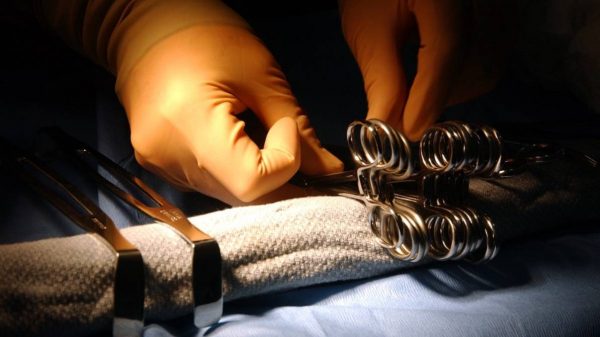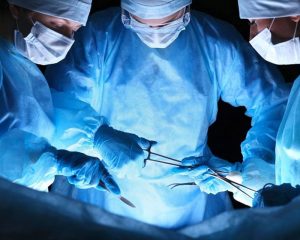Liver transplant surgery involves the removal of the non-functioning liver and placing a healthy liver that was gotten from a deceased or living donor. The largest organ in the body is the liver and it carries out several vital functions such as removal of toxins and bacteria from the bloodstream, fighting off infections, and controlling immune responses. The liver also processes medications, hormones, and nutrients and makes proteins that aids in blood clotting. It goes on to produce bile, a substance that assists the body in absorbing cholesterol and fat.
Why is a Liver Transplant Surgery Done?
Transplanting of the liver is the treatment option usually reserved for patients with the last stage of chronic liver condition. The procedure can also be done when a normal functioning liver suddenly breaks down. There are lots of people on the waiting list for a liver transplant with a lesser number of livers from deceased donors available. The liver is an organ that can regenerate itself shortly after a part of it was surgically removed. This makes the liver from a living donor an alternative for people on the waiting list for a liver from a deceased donor.
People suffering from liver failure or condition that has defied all other treatment techniques will need a liver transplant. There is no exact duration as to liver failure occurs, it can develop over a short while or a longer duration. If liver failure happens quickly, within weeks, then it is an acute case and is usually a medication-induced type of liver failure.
Although transplanting of the liver may be used in an acute case it is most commonly the treatment method for a chronic liver condition. The chronic case happens slowly over months or years. Its possible cause varies widely, the most common being liver cirrhosis (scarred liver). The scarred liver is a condition whereby the tissues of a normal liver become scarred and this disrupts the liver function. The most frequent reason for conducting a liver transplant is cirrhosis.
Liver transplant and liver failure may happen due to this major cirrhosis causes:
- Hepatitis B
- Hepatitis C
- Alcohol-induced liver disease
- Fatty liver condition (nonalcoholic)
- A genetic disease that affects the liver, such as Wilson’s disease and hemochromatosis.
- Diseases affecting the bile ducts, such as biliary atresia, biliary cirrhosis (primary) and sclerosing cholangitis (primary). in children, biliary atresia disease is a very common cause.
- Liver originated cancer may also be treated by a liver transplant surgery
What to Expect During a Liver Transplant
Pre-surgery
- Being added to a waiting list – After the doctors have ascertained your diagnosis and decided that they need to undergo a liver transplant, the next thing to be done is to be placed on a waiting list for a liver donor. A patient is placed on the list by order of priority meaning that those with a low life expectancy or whose case is severe will be on the upper on the list while those with a less severe condition will occupy the bottom part.There are methods used to determine this and that is the Pediatric-End-Stage-Liver-Disease (PELD) or Model for End-Stage Liver Disease (MELD).
- Waiting – The duration of this process varies amongst people. Some patients wait for only days, some wait for months and some would never get a liver from a deceased donor. While waiting, treatment will be administered to the patient to relieve them as much as possible.
- Living Donors – It is possible for a living person to donate a part of their liver to a patient. This was initially used to treat children because getting their appropriate size from a deceased donor is usually difficult. Now adults with the last stage of liver disease also benefit from it.Unlike in the case of getting liver from a deceased donor, access to a liver from a living donor is mainly determined by identifying a healthy living donor with the right blood type and size who can safely undergo the procedure. In most cases, these donors are members of the family or friends willing to give out a part of their lives.
- Staying healthy – Being active and healthy while waiting for your surgery does its part in preparing you for the surgery. It might also be able to hasten your recovery process. This can be achieved by taking your prescribed medication, follow your exercise and diet guidelines, keep all your scheduled appointment with the doctor, actively engage in healthy practices like relaxing.
During the Surgery
If you have been notified about the availability of a liver from a deceased donor then you have to get your prepared things and leave for the hospital. At the hospital, you will be admitted and undergo tests to ensure that you are healthy and ready for surgery.
This procedure is carried out when the patient has been put into a state of rest. A surgeon will then make an incision across the abdomen in order to access the liver. The size and location of the incision depend on the patient’s anatomy and the surgeon’s approach.
The blood supply and bile ducts of the liver are disconnected and the sick liver is removed. The donated liver is put in its place and blood supply is reconnected along with the bile ducts. Surgery may be as long as twelve hours.
If the liver is from a living donor, then the donor is first operated on to remove the needed part of the liver. The patients’ sick liver is taken out and the donors own placed inside. Both the donor liver and the patient’s remaining portion regenerates rapidly and reaches the normal volume in a couple of months.
Post Surgery
After the surgery, you may be required to stay back for close monitoring. There will be a frequent checkup even after you are discharged. You should also expect to take medication through your life after having a liver transplant surgery.























